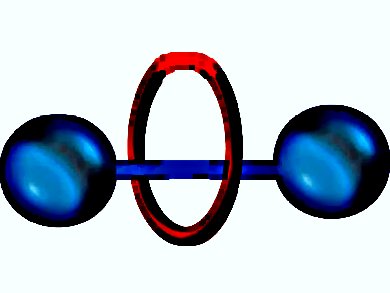Rotaxanes and pseudorotaxanes attract much attention because they may be used to make promising molecular electronics, switches, and machines. Typically, a wheel component (rotaxane) is threaded onto an axle (carbon chain). Large stopper groups (simple bulky molecules) added to the ends of the axle then stop the wheel coming off. The axle often contains stations (molecular recognition sites) between which the wheel can shuttle. Although a number of methods to generate such systems exist, their synthesis is often challenging.
Chuan-Feng Chen and Zheng Meng from the Chinese Academy of Sciences, Beijing, China, have synthesized a shuttle with three stations in high yield (76 %), which works by simple addition of chemicals. The wheel (triptycene-derived pseudorotaxane) starts at station one (N-methyltriazolium), then addition of a simple salts (KPF6 followed by LiClO4) moves the wheel to station two (anthraquinone) and then onward to station three (pyromellitic diimide). Removal of the salts (by adding 18-crown-6) returns the wheel back to station one. These three-station systems show unidirectional motion and may be further developed into devices such as nano valves.
- Highly Efficient Synthesis of A Tristable Molecular Shuttle and Its Controlled Motion Under Chemical Stimuli,
Zheng Meng, Chuan-Feng Chen,
Org. Biomol. Chem. 2014.
DOI: 10.1039/C4OB01283F




